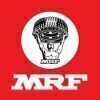Filter interviews by
Yazaki Quality Engineer Interview Questions and Answers for Experienced
Yazaki Quality Engineer Interview Experiences for Experienced
4 interviews found
I applied via Naukri.com and was interviewed in Jul 2023. There were 3 interview rounds.

(1 Question)
- Q1. Quality 7 QC tools , 8D ,Problem solving tools , Quality Circle
(1 Question)
- Q1. Family Background
I applied via Job Portal and was interviewed in Nov 2022. There were 2 interview rounds.

(4 Questions)
- Q1. Wiring harness regards Ani questions
- Q2. Quality inn express is for years
- Ans.
For years quality work Experience
- Q3. Wiring harness prosis
- Ans.
Atokote to mykote
Mykote pas setting se leke packing done ✅
- Q4. Wiring harness quality
Interview Preparation Tips
- Quality
- Production
- Development
Veth quality A to Z
Interview Questionnaire
2 Questions
- Q1. No one Question asked.
- Q2. It is Direct joining because of Training.
I applied via Recruitment Consultant and was interviewed before Jan 2021. There was 1 interview round.
Interview Questionnaire
3 Questions
- Q1. How many level in ppap
- Ans.
There are 5 levels in PPAP (Production Part Approval Process).
PPAP has 5 levels: Level 1, Level 2, Level 3, Level 4, and Level 5.
Each level represents a different stage of the PPAP process.
Level 1 includes documentation submission, while Level 5 involves customer approval.
The higher the level, the more comprehensive the PPAP requirements become.
PPAP is used to ensure that suppliers meet the quality standards of their c
- Q2. Difference between cp and cpk
- Ans.
Cp measures the capability of a process to meet specifications, while Cpk measures the capability of a process to meet specifications considering centering.
Cp is a short-term capability index, while Cpk is a long-term capability index.
Cp considers only the spread of the process, while Cpk considers both the spread and the centering of the process.
Cp is calculated using the formula Cp = (USL - LSL) / (6 * standard devia...
- Q3. What is capa
- Ans.
CAPA stands for Corrective and Preventive Action. It is a systematic approach to identify, investigate, and resolve quality issues.
CAPA is a key component of quality management systems.
It involves identifying the root cause of a problem, implementing corrective actions to address the immediate issue, and preventive actions to prevent recurrence.
CAPA processes typically include steps like problem identification, investi...
Interview Preparation Tips
Yazaki interview questions for designations
Top trending discussions






Interview questions from similar companies

Quality Engineer Interview Questions & Answers
Samvardhana Motherson Groupposted on 19 May 2021
I applied via Naukri.com and was interviewed in Nov 2020. There were 4 interview rounds.
Interview Questionnaire
2 Questions
- Q1. Tell me something about you
- Q2. Which company do u past work
Interview Preparation Tips

Quality Engineer Interview Questions & Answers
Samvardhana Motherson Groupposted on 26 May 2020
I applied via Walk-in and was interviewed in Apr 2020. There were 3 interview rounds.
Interview Questionnaire
3 Questions
- Q1. 7 QC tools?
- Ans.
The 7 QC tools are a set of basic quality control tools used to identify and solve quality problems.
Check sheets
Control charts
Histograms
Pareto charts
Scatter diagrams
Stratification
Cause-and-effect diagrams
- Q2. Roles & Responsibilities on previous company?
- Ans.
As a Quality Engineer in my previous company, I was responsible for ensuring product quality, conducting audits, and implementing quality control processes.
Conducted product quality inspections and audits
Implemented quality control processes to improve product quality
Analyzed data to identify areas for improvement
Collaborated with cross-functional teams to address quality issues
Ensured compliance with industry standard
- Q3. QA & QC Difference?
- Ans.
QA focuses on preventing defects while QC focuses on identifying and fixing defects.
QA is a proactive process that involves planning, designing, and executing tests to prevent defects from occurring.
QC is a reactive process that involves identifying defects through testing and then fixing them.
QA is focused on the entire software development life cycle while QC is focused on the testing phase.
Examples of QA activities ...
Interview Preparation Tips

Interview Questionnaire
1 Question
- Q1. Genral diploma mechanical Related question

Quality Engineer Interview Questions & Answers
Continental Automotive Componentsposted on 8 Jan 2024
Basic questions about mathematics, grammer etc
(1 Question)
- Q1. Tell me about ur self, EC related questions, some simple coding average number, Fibonacci etc..

I appeared for an interview in Jan 2025.
(3 Questions)
- Q1. What is 5 core tool , 7 qc tool , 8 D , why why analysis
- Ans.
Core tools and techniques used in quality engineering include 5 core tools, 7 QC tools, 8D methodology, and the Why-Why analysis.
5 Core Tools: APQP, PPAP, FMEA, MSA, SPC
7 QC Tools: Check sheets, Pareto charts, Cause-and-effect diagrams, Histograms, Scatter diagrams, Control charts, Flowcharts
8D Methodology: Eight disciplines problem solving approach used to identify, correct, and prevent recurring problems
Why-Why Analy...
- Q2. What is the role of company in DWM
- Ans.
The role of a company in Design for Manufacturability (DWM) is to ensure that products are designed in a way that makes them easy and cost-effective to manufacture.
Ensuring that product designs are optimized for efficient manufacturing processes
Collaborating with design and manufacturing teams to identify and address potential manufacturing challenges early in the design phase
Implementing design guidelines and best pra...
- Q3. What is MSA and SPC explain
- Ans.
MSA stands for Measurement System Analysis and SPC stands for Statistical Process Control.
MSA is a method used to assess the measurement system variation to ensure data accuracy.
SPC is a method used to monitor and control a process through statistical analysis.
MSA includes Gage R&R studies to evaluate the measurement system's repeatability and reproducibility.
SPC involves using control charts to detect any variatio...
(2 Questions)
- Q1. What is process quality
- Ans.
Process quality refers to the level of consistency, accuracy, and effectiveness in the execution of a particular process.
Process quality is about ensuring that a specific process consistently meets the desired standards and requirements.
It involves identifying and eliminating defects, errors, and variations in the process to improve overall quality.
Process quality can be measured using metrics such as defect rates, cyc...
- Q2. 8D explain.
- Ans.
8D is a problem-solving methodology used in quality management to identify, correct, and prevent recurring problems.
8D stands for 8 disciplines, each representing a step in the problem-solving process
Steps include defining the problem, forming a team, identifying root causes, implementing corrective actions, and preventing recurrence
Example: A manufacturing company uses 8D to address a recurring defect in their product
Interview Preparation Tips

I applied via Walk-in and was interviewed in Oct 2023. There were 3 interview rounds.

(2 Questions)
- Q1. What is the function of alternator &stator
- Ans.
The alternator generates electricity to power the vehicle's electrical system, while the stator is a stationary component that helps produce electricity in the alternator.
Alternator converts mechanical energy into electrical energy
Stator is a stationary part of the alternator
Stator contains wire windings that produce electricity when the rotor spins
Alternator charges the battery and powers the electrical system of the
- Q2. What is winding
- Ans.
Winding is the process of wrapping a material around a core or spool to create a coil or roll.
Winding is commonly used in the manufacturing of electrical coils, transformers, inductors, and motors.
The material being wound can be wire, thread, yarn, tape, or any other flexible material.
The winding process can be done manually or using automated machinery.
Examples include winding copper wire around a bobbin to create a t...
(2 Questions)
- Q1. What is alternator &stator
- Ans.
An alternator is a device that converts mechanical energy into electrical energy, while a stator is the stationary part of a rotary system.
Alternator is used in vehicles to charge the battery and power the electrical system
Stator is the stationary part of an electric motor or generator
Alternator produces alternating current (AC) while stator helps in generating a magnetic field
- Q2. What is 52wh word
- Ans.
52wh word is a term used in quality engineering to refer to a specific type of problem-solving technique.
52wh word stands for Who, What, Where, When, Why, How, How much, How many, and How often.
It is used to systematically analyze a problem by asking these key questions.
For example, when faced with a quality issue in a manufacturing process, a quality engineer may use the 52wh word technique to identify the root cause
Interview Preparation Tips
Yazaki Interview FAQs
Tell us how to improve this page.
Yazaki Interviews By Designations
- Yazaki Quality Engineer Interview Questions
- Yazaki Diploma Trainee Engineer Interview Questions
- Yazaki Production Engineer Interview Questions
- Yazaki Junior Engineer Interview Questions
- Yazaki Assistant Manager Interview Questions
- Yazaki Maintenance Engineer Interview Questions
- Yazaki Operator Interview Questions
- Yazaki Machine Operator Interview Questions
- Show more
Interview Questions for Popular Designations
- Quality Inspector Interview Questions
- Senior Quality Engineer Interview Questions
- Quality Controller Interview Questions
- Quality Assurance Interview Questions
- Quality Manager Interview Questions
- Quality Executive Interview Questions
- Quality Assurance Officer Interview Questions
- Quality Assurance Quality Control Engineer Interview Questions
- Show more
Yazaki Quality Engineer Interview Process for Experienced
based on 1 interview
Interview experience
Quality Engineer Interview Questions from Similar Companies
Fast track your campus placements
Yazaki Quality Engineer Reviews and Ratings
based on 72 reviews
Rating in categories
|
Junior Engineer
520
salaries
| ₹1.5 L/yr - ₹5.5 L/yr |
|
Assistant Manager
386
salaries
| ₹4.3 L/yr - ₹13.8 L/yr |
|
Engineer
304
salaries
| ₹1.9 L/yr - ₹7.4 L/yr |
|
Senior Engineer
296
salaries
| ₹3.7 L/yr - ₹10 L/yr |
|
Production Engineer
291
salaries
| ₹1.2 L/yr - ₹7 L/yr |

Bosch

Samvardhana Motherson Group

MRF Tyres

Ceat Tyres
- Home >
- Interviews >
- Yazaki Interview Questions >
- Yazaki Quality Engineer Interview Questions for Experienced














